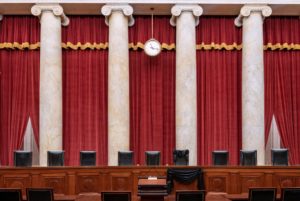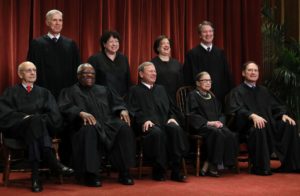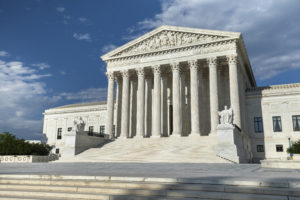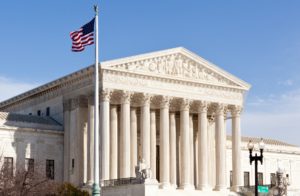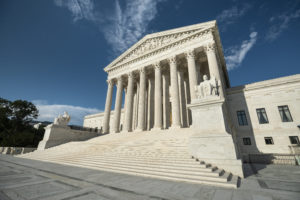The Detroit News: How a Supreme Court with eight justices works
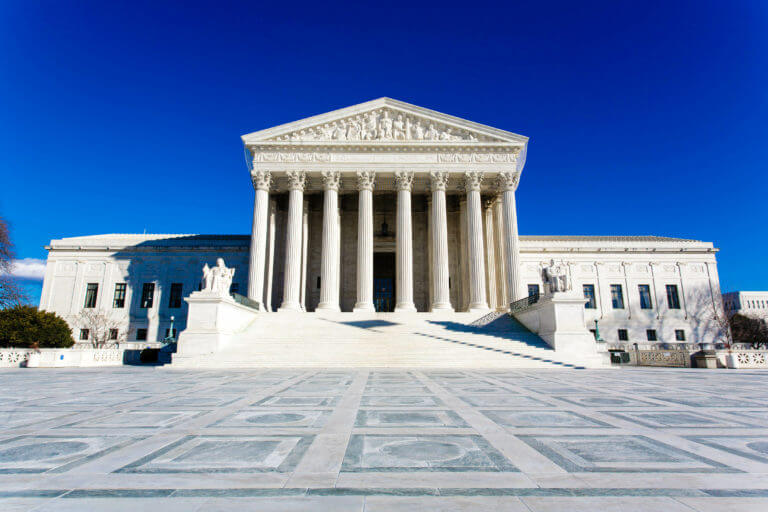
The passing of Justice Ruth Bader Ginsburg just weeks before the start of the Supreme Court’s 2020-21 term has left many wondering: What happens when there’s an eight-member court?
We don’t have to look back far to find the answer. The court soldiered on from February 2016 until April 2017 with eight justices after the sudden death of Antonin Scalia, and started its 2018-19 term one justice down between Anthony Kennedy’s retirement and Brett Kavanaugh’s confirmation. Here are four potential outcomes for close cases heard by an eight-member Supreme Court.
4-4 Split, Affirming the Lower Court’s Ruling
If the eight-member court is at loggerheads, the justices may end up ruling 4-4. That means the lower court’s ruling stands. This happened in four cases in the term when Scalia passed away. One of those cases, Friedrichs v. California Teachers Association, involved whether public employees who opt out of union membership could be forced to subsidize the costs of collective bargaining. But a similar case quickly made its way to the court once there were nine members, and in 2018, the court ruled in favor of the employees in Janus v. AFSCME.
Try to Reach a Narrow Agreement
The eight-member court could try to reach narrow rulings that at least five members would agree to join. Chief Justice John Roberts is known for trying to seek compromises and promote unanimous rulings whenever possible, so this may be one path forward. If the court takes this course, it’s unlikely the rulings will provide much guidance beyond those particular cases.
Schedule Cases for Reargument
Another option would be for the court to schedule cases for reargument after the ninth justice is confirmed. When Kavanaugh joined the court in October 2018, the justices had already heard oral arguments in Knick v. Township of Scott, Pennsylvania (a case brought by my firm asking the court to overrule an earlier ruling that effectively barred the doors to federal courts for property owners). The court scheduled Knick for a second argument in January 2019, and ruled 5-4 in our client’s favor.
There are plenty of examples like this when other members ascended to the court. For example, the court reheard four cases when Kennedy joined in February 1988, two cases when Justice Clarence Thomas was confirmed in late October 1991, three cases after Justice Samuel Alito joined the court in January 2006, and two cases after Justice Neil Gorsuch was confirmed in April 2017. Just as in Knick, in most of these instances, the court ultimately ruled 5-4 in the reargued cases.
Let The Ninth Justice Review Argument Transcripts and Vote
A fourth (and more controversial) option would be to let the ninth justice review the argument transcripts and vote in those cases, assuming she is confirmed before the court is ready to issue its ruling. Supreme Court rules don’t actually preclude this, but it’s highly unlikely in practice that a justice would cast a vote in cases argued before she joined the court.
While it’s a rare occurrence, there have been some instances in which a sitting justice participated in a case despite missing the oral arguments. For example, Ginsburg missed a few oral arguments in the 2018-19 term, and she even wrote the majority opinion in one, Ritzen Group, Inc. v. Jackson Masonry, LLC, a bankruptcy case.
Likewise, when Chief Justice William Rehnquist was battling thyroid cancer he missed several arguments throughout the 2004-05 term. He ended up voting in many of those cases, and wrote the majority opinion in four of them. Of course, Ginsburg and Rehnquist were members of the court when they missed oral arguments.
It’s important to note that only one in four Supreme Court cases is decided by one vote, so having one fewer justice likely won’t make much difference in the vast majority of cases. And further, given the court’s current composition, we’re more likely to see cases decided 5-3 rather than 4-4. In short, as Justice Stephen Breyer said at an event shortly after Scalia’s death, “The cases come along” and “we’ll do our work.”
This op-ed was originally published by The Detroit News on October 6, 2020.


